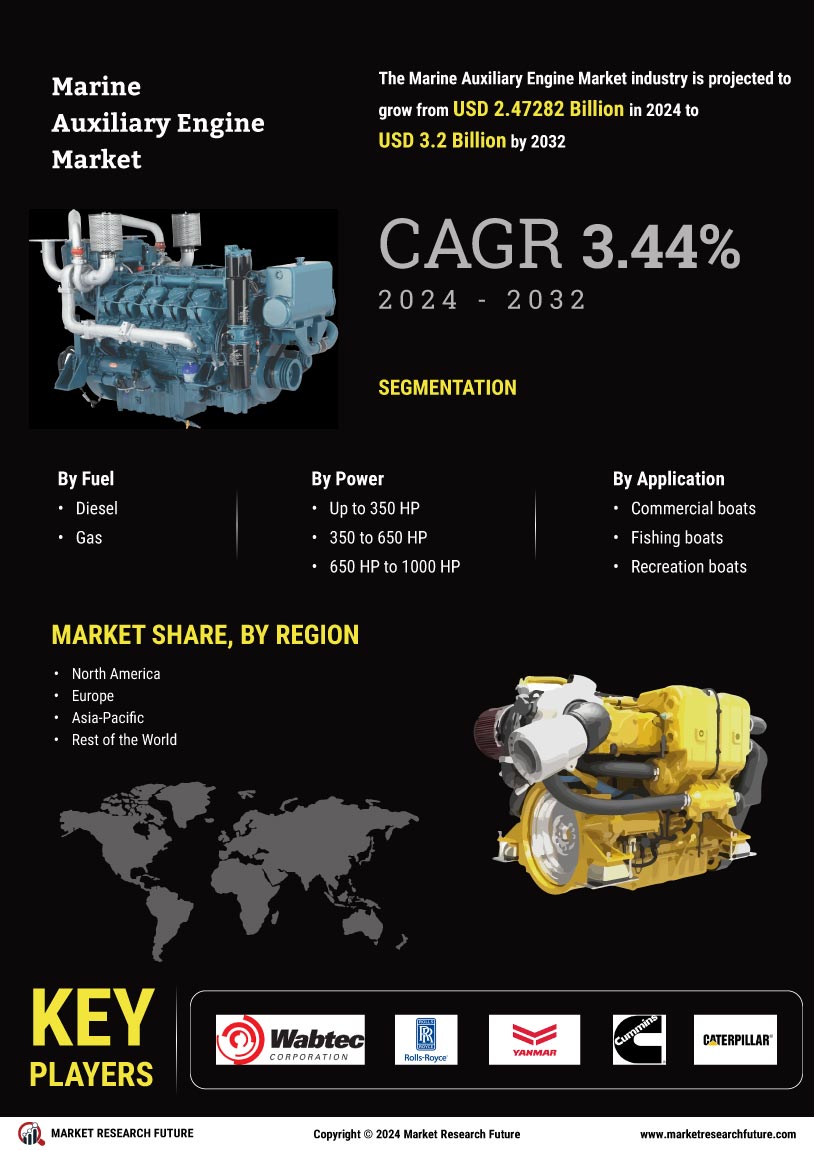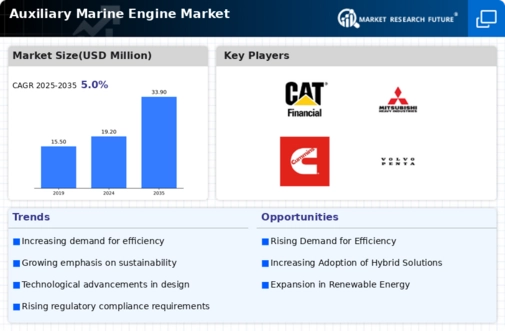The competitive landscape of the Auxiliary Marine Engine market is influenced by several key players who offer products for various applications. Major market participants, including Caterpillar Inc., Mitsubishi Heavy Industries Ltd., Wärtsilä Corporation, MAN Energy Solutions SE, Cummins Inc., Rolls-Royce Holdings plc, Volvo Penta, and Yanmar Co., Ltd., among others. These companies have established a strong presence in the market and enjoy a significant customer base worldwide. Market players focus on research and development activities to introduce innovative and eco-friendly auxiliary engines to gain a competitive edge.
The growing emphasis on sustainability and stringent environmental regulations have prompted manufacturers to invest in developing engines with reduced emissions and improved fuel efficiency. In addition to technological advancements, companies are expanding their geographical reach through strategic collaborations and partnerships. By entering into agreements with shipbuilders, naval forces, and other key stakeholders, these companies can enhance their market presence and gain access to new opportunities.
Caterpillar Inc.: Caterpillar Inc. is a manufacturer of construction and mining equipment, diesel and natural gas engines, industrial gas turbines and diesel-electric locomotives. The Company operates through its three primary segments: Construction Industries, Resource Industries and Energy & Transportation. It also provides financing and related services through its Financial Products segment. Its Construction Industries is engaged in supporting customers using machinery in infrastructure, forestry and building construction.
Its Resource Industries is engaged in supporting customers using machinery in mining, heavy construction, and quarry and aggregates. Its Energy & Transportation, which supports customers in oil and gas, power generation, marine, rail and industrial applications, including Caterpillar machines. Its All-Other operating segment, which includes activities, such as product management and development, manufacturing of filters and fluids, undercarriage, ground-engaging tools, and others.
Mitsubishi Heavy Industries Ltd.: Mitsubishi Heavy Industries Ltd is a Japan-based company mainly engaged in the development of energy systems, and plants & infrastructure systems. The Company operates through four segments. Energy Segment is engaged in the design, manufacturing, sales, services and installation of thermal power generation systems, nuclear power generation systems, wind power generation systems, aircraft engines.
Plants & Infrastructure Segment is engaged in the design, manufacturing, sales, services and installation of steelmaking machinery, ships, engineering, environmental equipment, mechanical systems. Logistics, Thermal & Drive Segment is engaged in the design, manufacturing, sales, services and installation of distribution equipment, turbochargers, engines, refrigeration products. Aircraft, Defense & Space Segment is engaged in the design, manufacturing, sales, services and installation of civil aircraft, defense aircraft, airplanes, naval vessels, special vehicles, special machinery.















Leave a Comment